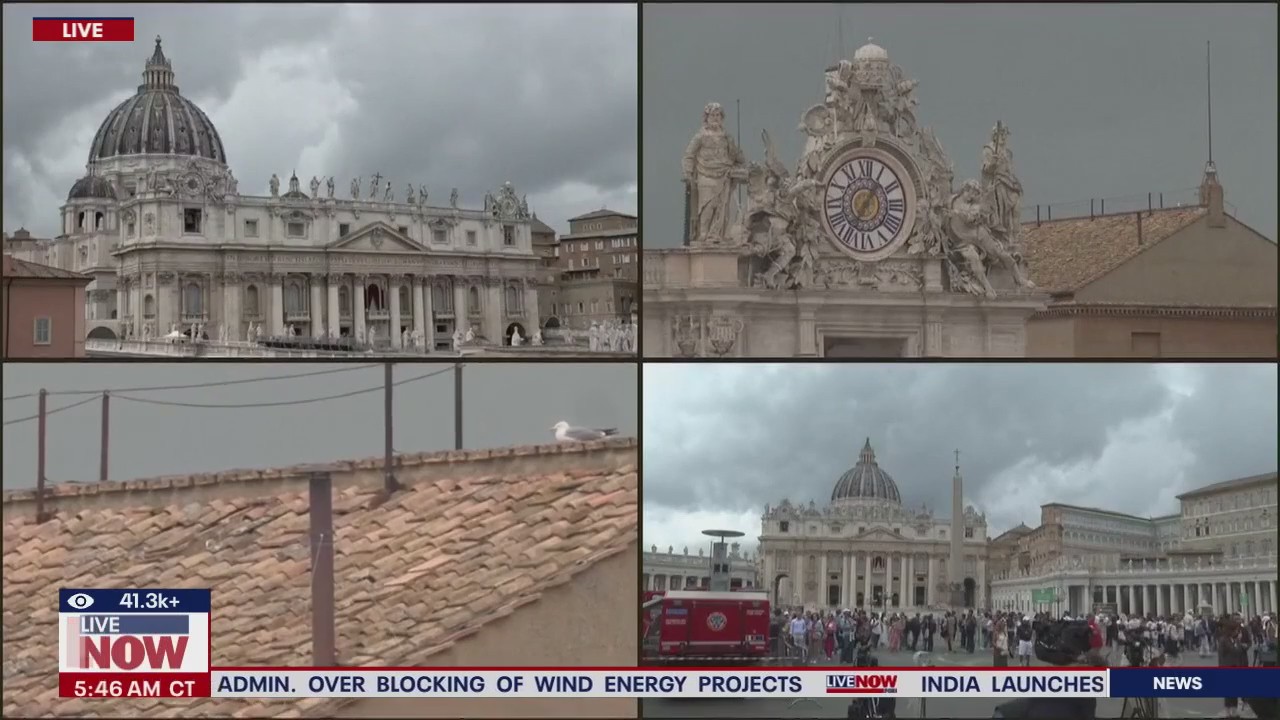The pope’s regnal name: What it is and why it matters

Cardinals gather to elect next Pope
Cardinals from around the world have descended on Rome for the secretive conclave to decide the next pope. Italian Cardinal Pietro Parolin and Filipino Cardinal Luis Antonio Tagle are among the top contenders to succeed Pope. Michael Haynes, senior Vatican correspondent at LifeSite, breaks down what the first day of votes will look like.
LOS ANGELES - The Catholic Church is preparing for a historic transition following the death of Pope Francis on April 21, 2025. His funeral is scheduled for April 26, and Vatican officials announced that the conclave to elect his successor will begin on May 7.
The conclave — a secret gathering of the College of Cardinals under age 80 — will be held inside the Sistine Chapel. There, the 135 cardinal-electors will vote in seclusion until a new pope is chosen by a two-thirds majority. The moment will be marked by white smoke from the chapel chimney and the traditional announcement: Habemus Papam — "We have a pope."
Once elected, the new pope’s first major decision will be selecting a regnal name, a symbolic choice that will set the tone for his pontificate.
Why regnal names matter so much
Big picture view:
While there are no formal rules requiring a new pope to choose a particular name, the tradition dates back nearly 1,500 years. It’s considered one of the most significant early acts of a new pope’s reign.
"It's the most important decision he'll make, and signal to the world his tone," Allen Sánchez, executive director of the New Mexico Conference of Catholic Bishops, recently told Axios.
Names often honor previous popes, Catholic saints, or religious themes. They can suggest continuity with the past, a desire for reform, or a return to traditional doctrine.

FILE - SSC Napoli owner Aurelio De Laurentiis presents a personalized jersey to Pope Francis during the "Eco-Educational Cities" conference in Rome on May 25, 2023. (Photo by ANDREAS SOLARO/AFP via Getty Images)
Possible names and what they would signal
Experts say the name chosen could offer early clues about the new pope’s priorities:
- Francis II: Signals continuity with Pope Francis’ focus on the poor, climate change, and interfaith dialogue.
- John XXIV: Echoes Pope John XXIII, who launched Vatican II reforms — a possible sign of modernization.
- Leo XIV or Pius XIII: Points to a more conservative approach emphasizing traditional doctrine.
- Paul VII: Suggests engagement with modern issues while holding firm on moral teachings, similar to Pope Paul VI.
Throughout history, the name John has been the most popular, chosen by 21 popes. Names like Gregory and Benedict have also been popular. Out of reverence, no pope has ever dared to adopt the name Peter II, honoring the church’s first pope, Saint Peter.
Could the next pope choose a completely new name?
What we know:
Pope Francis himself broke tradition by choosing a new papal name in 2013, honoring St. Francis of Assisi. The next pope could similarly select a never-before-used name to make a bold statement.
Some possibilities floated by experts include:
- Oscar I: Honoring St. Óscar Romero, signaling a strong commitment to human rights and social justice.
- Martin VI: Referencing St. Martin de Porres, patron saint of racial harmony and marginalized groups.
- Maximilian I: Honoring St. Maximilian Kolbe, a martyr of Auschwitz — a powerful symbol for free speech and resistance to oppression.
- Jude I: Highlighting solidarity with the marginalized and signaling a stance against antisemitism worldwide.
What we don't know:
The new pope’s personal inspirations, cultural background, and theological priorities will all influence his choice — but those remain completely unknown until the name is announced. Vatican watchers can make educated guesses, but no one outside the conclave will know his decision until the traditional "Habemus Papam" moment.
And while the next pope may choose a bold, symbolic name, he could also opt for continuity by choosing a familiar one from the church’s long history.
How conclaves and papal names evolved
The backstory:
The tradition of conclaves — from con clave, meaning "with a key" — began in the Middle Ages to emphasize the cardinals’ seclusion during papal elections.
Modern conclaves are governed largely by rules established by St. John Paul II in 1996, with key updates from Pope Benedict XVI. Under current rules, a two-thirds majority is always required, even after multiple rounds of voting.
The custom of selecting a papal name became common around the sixth century. The first pope to officially change his birth name upon election was John II in 533, due to his given name, Mercurius, having pagan roots.
Today, the name the pope selects is seen not only as a personal statement but also as a global message about the direction of the Catholic Church in the years to come.
The Source: This article is based on Associated Press reporting about the conclave’s timing and procedures analysis by Axios on papal naming traditions, background information from Encyclopedia Britannica on conclave history and Vatican announcements regarding Pope Francis’ funeral and the conclave.

